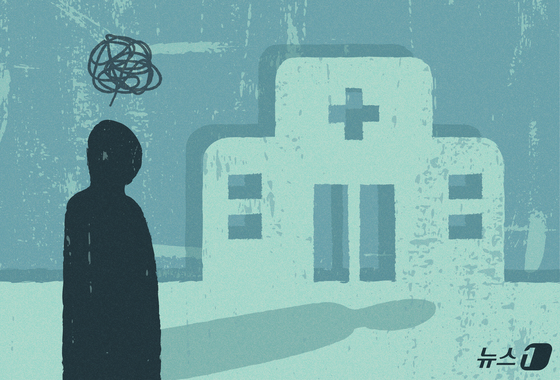
Clear white patches on the skin may be mistaken for simple skin trouble but could be a sign of vitiligo, an autoimmune disease. While it causes noticeable changes in appearance, it can also have a significant negative impact on mental health. However, it can be effectively managed with early diagnosis and proper treatment.
Vitiligo is a condition in which melanocytes—cells responsible for producing pigment in the skin—are destroyed after birth, resulting in white patches of varying shapes and sizes. A distinguishing feature of the condition is leukonychia, or the whitening of hair.
The prevalence of vitiligo varies by country and ethnicity, but globally, around 0.5 to 2 percent of the population is affected. In South Korea, the number of patients is estimated to be around 400,000. Half of the cases occur before the age of 20. Although it can occur at any age, it is most common between 10 and 30.
Kim Hye Seong of the Department of Dermatology at Incheon St. Mary’s Hospital, Catholic University of Korea, stated, “Vitiligo was once considered an incurable disease, and many patients gave up on treatment. However, new treatment methods have been developed recently and show promising results. The condition can improve significantly with an accurate diagnosis and treatment in consultation with a dermatologist.”
The exact cause remains unknown. It is currently believed to be an autoimmune disease in which the body’s immune cells target and destroy melanocytes, resulting in depigmentation. Genetic factors, decreased antioxidant capacity, external stimuli, stress, and ultraviolet (UV) exposure are also thought to play a role.
Vitiligo typically causes no physical discomfort. It presents as sharply defined white patches of various sizes and irregular shapes, which become more visible under a Wood’s lamp, often used in clinical diagnosis.
The affected areas often include depigmented body hair. In some cases, vitiligo is first discovered through whitening the hair on the scalp or eyebrows. It can appear anywhere on the body but commonly starts on bony protrusions such as the hands, feet, knees, elbows, and around the eyes, nose, and mouth. It also tends to develop in areas frequently exposed to physical trauma or injury.
Kim emphasized, “Vitiligo doesn’t typically cause itching or pain, so people may not recognize its seriousness in the early stages. Many ignore it and miss the optimal window for treatment, so it is crucial to seek medical care as soon as symptoms appear.”
High-potency topical steroids or non-steroidal calcineurin inhibitors are commonly used for localized lesions covering less than 5 percent of the body. If more than 5 percent of the body is affected, phototherapy inside a treatment chamber is the standard approach.
Narrowband UVB (NBUVB) phototherapy is used for widespread or scattered lesions. Targeted phototherapy using excimer lasers is applied for limited, localized lesions. New medications may be considered for areas like the hands and feet, where treatment response is often poor or where the condition is rapidly progressing.
Lee Un Ha of the Department of Dermatology at Sanggye Paik Hospital, Inje University, said, “Phototherapy using UV light is effective and can be safely administered even to children and pregnant women. It works particularly well on the face, neck, torso, and limbs, though results are less effective on mucous membranes and extremities.”
In addition to treatment, lifestyle adjustments to avoid triggers are essential. Since vitiligo can also be triggered by sunburn from excessive sun exposure, wearing hats or long-sleeved clothing to block sunlight and applying high-SPF (SPF 50+, PA+++) sunscreen is important.
When exposed to UV light, the depigmented areas in vitiligo may not tan, while the surrounding normal skin does, making the patches more noticeable. It is also recommended to avoid scratching the skin, causing injuries, scrubbing with harsh towels, or undergoing procedures like tattoos. Avoiding alcohol and smoking is also advised.
Severe emotional stress can also worsen vitiligo. In particular, patients with vitiligo are more prone to mental health conditions such as depression and anxiety, which lower the quality of life. Psychological support or therapy may be helpful.

Vitiligo is a skin condition that can significantly reduce the quality of life. As it falls under the category of autoimmune diseases, it can be accompanied by other conditions such as alopecia areata or thyroid dysfunction. Accurate early testing and diagnosis are essential. With the development of new medications, the effectiveness of vitiligo treatment has increased, so active treatment is recommended.
Lee added, “Although it has long been regarded as a representative intractable disease, if discovered early and treated consistently and diligently, over 70 percent of lesions can be treated. It’s important not to be misled by unverified information and to pursue treatment under the guidance of a dermatologist to achieve full recovery.”
